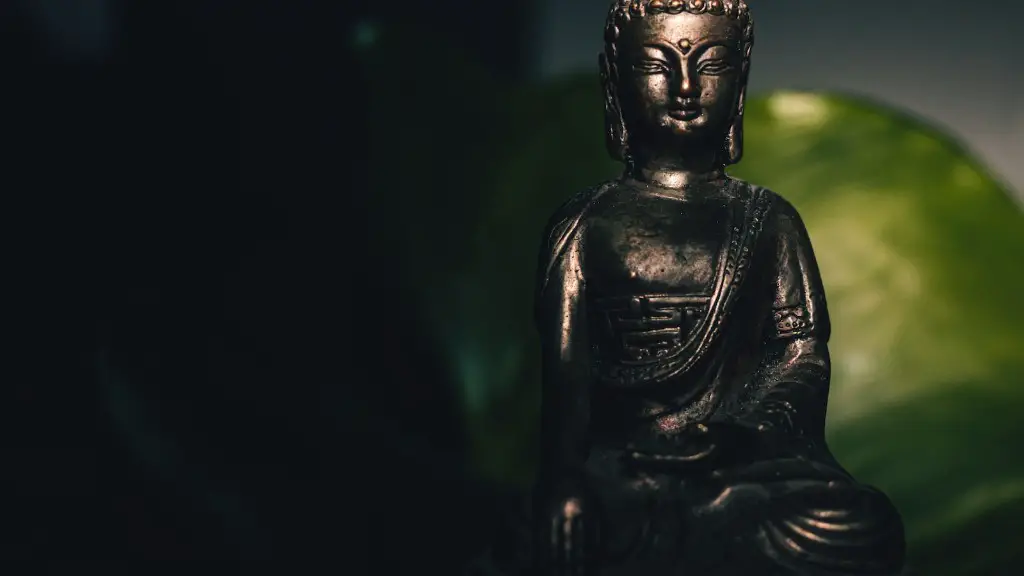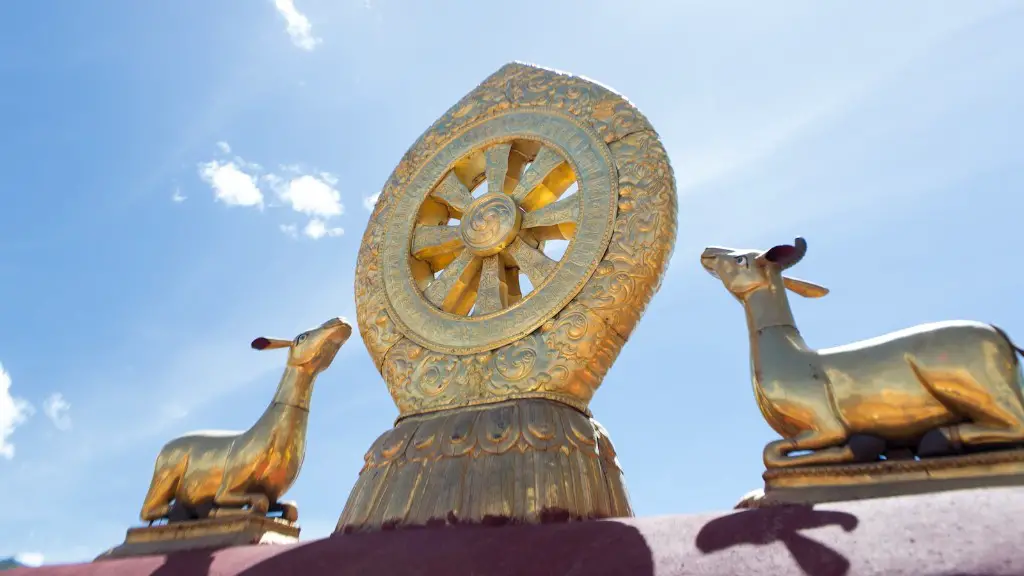What Is The Caste System In Hinduism?
Hinduism, one of the world’s oldest and largest religions, is made up of dozens of different denominations and countless sects. These sects are based on different degree of orthodoxy and varying interpretations of religious doctrine and texts. One of the most controversial aspects of Hinduism is the caste system, a hierarchy of social classes that has existed for thousands of years.
Generally speaking, the Hindu population is divided into four main castes: Brahmins (priests and scholars); Kshatriyas (rulers and soldiers); Vaishyas (artisans, farmers and traders); and Shudras (labourers and servants). But, there is also a fifth caste, the so-called ‘untouchables’, who are subjected to extreme levels of discrimination and exclusion in Hindu society. The caste system provides social order and a strong sense of identity and belonging to Hindus.
Supporters of the system argue that the idea of caste provides stability to Hinduism by encouraging people to find their niche in society and perform the tasks that are best suited to their abilities and interests. They believe that it is the basis of Hindu society and its powerful cultural heritage. It is also the identity marker used by Hindus to differentiate themselves from other Eastern and Western religious groupings.
Critics of the caste system, however, argue that it is a form of social oppression and marginalization. They point to the discrimination and abuse that many people experience as a result of their caste designation. They also argue that the system violates the right of individuals to freely choose their profession or social class. In some cases, it has been seen as a form of racial discrimination, as certain lower-caste individuals are subjected to prejudices and humiliation merely because of their caste.
The Indian constitution of 1950 has outlawed caste-based discrimination, but some social activists criticize the Indian government for failing to make the necessary legal changes to properly enforce these laws. The caste system is still embedded in Hindu society, and it remains an obstacle to achieving greater social justice. There are also lingering effects of the caste system in other countries with large Hindu populations, such as Nepal and Sri Lanka.
Caste and Religion
Historically, the caste system in Hinduism has been closely associated with religion, as those belonging to lower castes were once prohibited from observing the same religious practices as higher castes. Although some Hindu denominations have made inroads in eliminating this distinction, the caste system still pervades Hindu society. For example, marriage restrictions between castes still exist in some parts of India, and people from lower castes are sometimes barred from entering temples and shrines.
The caste system varies greatly throughout India, as it has been shaped by local customs and traditions in different parts of the country. In certain regions, castes have become distinct local identities and have been further sub-divided into numerous sub-castes. In some cases, those of the higher castes have sought to keep those of the lower castes in a state of social, economic and political subordination.
The modern interpretation of the caste system is quite different from its traditional version. In urban India, there is less emphasis on caste divisions and many are actively seeking to move outside the confines of traditional caste identities. This is evident in the increasing numbers of cross-caste marriages and people entering the professions that were previously forbidden to lower castes.
Nonetheless, despite the progress made in recent years, the caste system remains a major source of social and economic inequality in India. Those from lower castes are found in disproportionate numbers in the lowest social and economic classes. Furthermore, discrimination and prejudice based on caste are still widespread, both in India and in other countries with significant Hindu populations.
Impact of Caste System on Society
The impact of the caste system on Hindu society over the centuries has been both profound and far-reaching. It has been credited, on the one hand, with providing a stable structure that allowed Hinduism to thrive and develop. On the other hand, it has been a direct contributor to inequality and discrimination in Hindu societies across the world.
The caste system has had a significant economic impact. It has been argued that it has discouraged the upward mobility of poorer castes by shutting them out of better-paid jobs, education and housing. Furthermore, those from lower castes may be unable to access the same resources, such as land and money, that those from higher castes receive. The effects of this can be long-lasting and often, those of lower castes are pushed into poverty.
The caste system has also had a deep psychological impact. It has encouraged a sense of shame and inferiority amongst lower castes and, in some cases, mental health issues such as depression and anxiety. At the same time, the higher castes have been privileged with a sense of power and superiority, leading to cases of and discrimination.
The caste system has also been linked to violence and oppression. In particular, those from lower castes are vulnerable to physical and mental abuse from those of higher castes, as prejudices and discrimination remain unfortunately widespread.
Efforts to Eliminate the Caste System
Over the years, there have been various attempts to eliminate the caste system from Hindu society. For example, the British rulers outlawed the practice of ‘untouchability’ and religious discrimination was outlawed in the Indian constitution. Additionally, the government has tried to promote economic opportunities for the lower castes by providing access to education and employment.
On an individual level, there are many activists and organisations working to promote greater understanding and acceptance of the lower castes. These organisations promote equality and fight to eliminate discrimination and abuse on the basis of caste. Additionally, there is a growing movement to open professional doors to those from lower castes, such as in the legal and medical fields.
There is also a growing trend of Hindu organisations and temples actively seeking to promote inclusion and embrace people of all castes. Furthermore, many higher-caste Hindus are joining in the fight to take on the entrenched biases that the caste system perpetuates.
Implications for the Future
The implications of the caste system for the future of Hinduism are of great importance as society continues to evolve and change. At present, there is still a great deal of entrenched inequality and discrimination related to caste. But, there is also growing evidence that Hindu communities are slowly beginning to move beyond its restrictive boundaries.
It is clear that it will take many years, even generations, to be rid of the toxic influence of the caste system. It is also clear that education, economic opportunity and greater understanding of this issue are important components of social change. Organizations, activists and individuals from all castes must work together to ensure that Hinduism evolves into a religion of equality and unity for all its practitioners.
Social Reformation and Dialogue
While the removal of government policies, laws and social pressures are important steps in eliminating the caste system, the most effective way to bring about true change is through active dialogue. People from all castes must be encouraged to come together and talk about the issues that affect them and work towards understanding, tolerance and acceptance. When Hindus come together to discuss these issues and their implications, they can create a more equitable society and promote greater understanding amongst individuals and groups of all castes.
Dialogue and social reformation is essential if Hinduism is to move forward in its journey towards a more just and tolerant future. Through open and honest dialogue, the ideals of justice and equality can be truly embraced by all. Furthermore, by working together, Hindus can ensure that the caste system is ultimately eliminated, allowing greater unity and equality within Hindu society.
Educational and Economic Reforms
In order to support social reformation, educational and economic reforms need to be enacted that promote and create greater economic opportunities for all castes. Improving access to higher education, vocational training, and employment is essential if the caste system is to be eliminated. Government-sponsored initiatives to reduce poverty and support economic and educational access in disadvantaged areas must be prioritised, particularly for those from lower castes.
The commitment of resources to improving education and economic prospects is necessary in order to create greater social mobility for all castes. Furthermore, it is important to ensure that economic opportunities are open to all castes and that those from the lower castes are not marginalised or excluded from higher-paying jobs and positions.
It is also essential that educational materials be made accessible to all members of society, in order to ensure that everyone has the resources they need to understand the issues and implications of the caste system. Furthermore, media and other forms of public discourse must be more reflective of the diversity of cultures and castes within Hindu society and work to create understanding and support positive social change.
Legislative Changes
Legislative changes are also needed to ensure greater protection for those from lower castes and to combat discrimination. The Indian government has taken some steps to outlaw caste-based discrimination and to provide greater equality, but more needs to be done to ensure that these provisions are properly enforced. Furthermore, local and international organisations must pressure governments on this issue and actively seek to combat and eliminate discrimination wherever it exists.
Furthermore, better legal protection must be provided to those subjected to discrimination and abuse. NGOs, activists and international organisations can play an important role in holding government and other institutions responsible for enforcing the legally mandated right to equal treatment, regardless of caste.
Ultimately, change on a wide scale and across all sectors of life is needed in order to eradicate the caste system from Hinduism and to ensure greater social justice and equality for all. This change must come from both the top-down and the bottom-up, and it must involve both grassroots activism and legal, educational and economic reforms.

